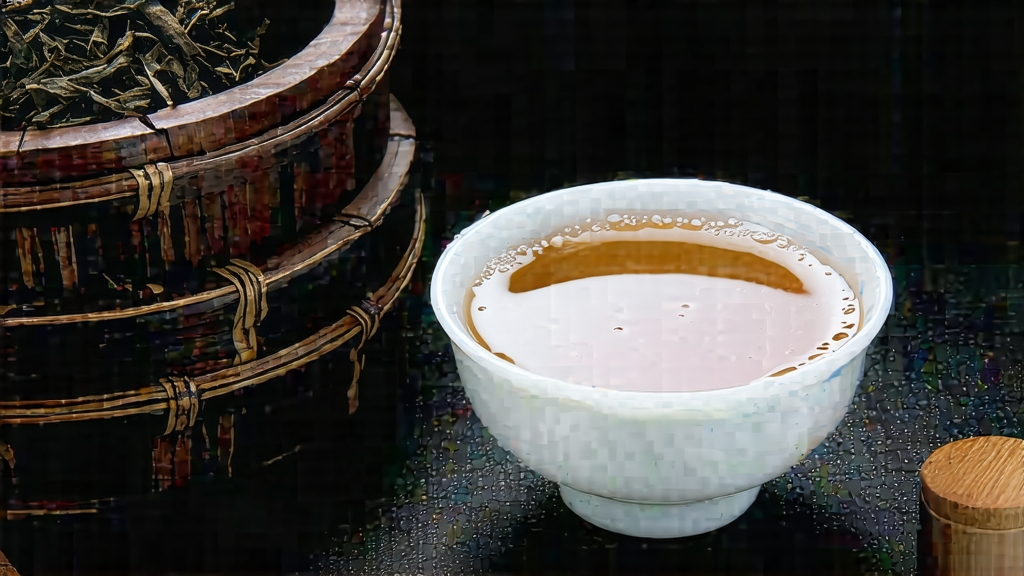
Ask any Chinese tea master to name the first black tea ever created and the answer is always the same: Lapsang Souchong. Born in the cool, mineral-rich folds of the Wuyi Mountains in northern Fujian, this rugged leaf carries within its curled, tar-black body the entire origin story of black tea. While today the world associates China with delicate greens and ethereal whites, it was the smoky, malty perfume of Lapsang Souchong that, four centuries ago, crossed oceans and convinced Europe that tea could be more than green. From London drawing rooms to Russian samovars, its campfire aroma became the signature of “bohea,” the catch-all term for elite Chinese black tea and the word that still echoes in the scientific name of the tea plant, Camellia sinensis var. bohea.
History: Legend places the birth around 1568, in the village of Tongmu, where fleeing soldiers forced farmers to abandon freshly picked leaves. By the time the villagers returned, the green had oxidized to a deep copper. Trying to salvage the crop, they dried it over hastily built pine fires; the resulting tea, far from ruined, arrived in Europe as an exotic novelty that fetched prices higher than silver. Dutch and later British merchants anglicized the place-name “Zhengshan Xiaozhong” into “Lapsang Souchong,” and by the early 1600s it was the first tea deliberately produced in an oxidized style, giving rise to every subsequent black tea on earth.
Micro-terroirs: Authentic Zhengshan Xiaozhong can only come from the 600–1 200 m core zone inside the Wuyi National Nature Reserve, a UNESCO site where mist drifts year-round through primordial forests of pine, cedar, and bamboo. Here the soil is a stony, slightly acidic laterite laced with quartz and iron; the diurnal swing can exceed 15 °C, coaxing the leaf to stack polyphenols and aromatic oils. Outside this 48 km² radius, the same cultivar becomes “wai shan xiao zhong,” still pleasant but lacking the resinous depth that pine and terroir imprint.
Cultivars: Most gardens rely on the indigenous Xiao Ye Zhong (“small-leaf species”), a slow-growing bush with narrow, olive-green leaves that curl into tight twists. A newer clonal selection, Wuyi #1, offers higher yield and brighter honey notes but is only used for unsmoked versions; the classic smoke demands the original strain’s tougher cellulose, which absorbs and later releases pine vapors without tasting acrid.
Craft: The protocol has changed little since the Ming dynasty. Picking opens on the third day after Grain Rain, when two leaves and a bud still wear downy white hairs. The baskets are bamboo, never plastic, so the leaf can breathe on the three-hour trek down to the village. Withering happens in the second story of wooden lofts whose shutters are cracked just enough to let mountain breeze skate across the bamboo trays. Once the leaf loses 60 % of its moisture and emits a baked-apple fragrance, rollers break cell walls by rocking the leaves in 55 cm-wide bamboo drums—no machines, only the percussion of forearm and wrist.
Oxidation is the heart. The crushed leaf is piled in pine-wood troughs and covered with wet cloths; every 20 minutes the tea master lifts a handful to the lamplight, watching for the copper penny color that signals complete transformation of catechins into theaflavins and thearubigins. When the moment arrives, the leaf is swiftly spread on iron pans heated to 220 °C for a 90-second “kill-green” that fixes the oxidation.
Then comes the step that divides purists: smoking. A pit is dug into the packed-earth floor of the firing room; pinewood from trees at least 25 years old is lit, allowed to flame for three minutes, then smothered into a smolder. The fresh tea is placed on bamboo racks two meters above the embers and smoked in cycles—two hours on, one hour off—over the next 24 hours. Resin-rich cambium layers release α-pinene and longifolene that bond to the leaf surface, creating the signature tar, dried-longan and single-malt whisky nose. A final charcoal bake at 80 °C reduces